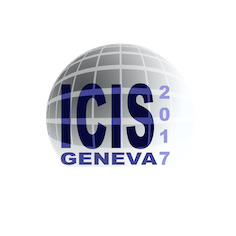Speaker
Description
Calibration of energy channels and control of stripping foil quality in neutral particle analyzers designed for international tokamak reactor ITER will be carried out using a specialized source of helium ions. The ion beam should have a uniform current density in entrance aperture of the analyzer with a diameter of 2 cm. The total intensity of the beam entering the analyzer should be adjusted in the range (0.1-1) pA. Within 30 minutes, the beam energy stability should not be worse than ± 0.25 %, and the intensity should not vary by more than ± 10%. The source should provide trouble-free operation for four years of operation with a frequency of switching on once a month for four hours. To manufacture the source, the radiation-resistant materials, which are allowed by ITER, should be used.
The paper presents a developed and successfully tested mock-up of a source of helium ions with the energy of 40 keV. The ionization of the helium fed by mass-flow controller is carried out in a high-vacuum Bayard-Alpert ionization gauge. The Bayard-Alpert gauge efficiently ionizes the gas due to oscillations of electrons emitted from the cathode of electrons inside the cylinder from a grid with high transparency. The Bayard-Alpert lamp is a completely standard, widely used reliable device with a sufficiently long operational life. To monitor the production of ions, a collector of the gauge is used. The beam of helium ions with an angular divergence of 40 mrad is formed by a diode ion-optical system with round apertures 1 cm in diameter covered with a fine-structure molybdenum mesh. The source is shifted from the analyzer observation channel and located at a distance of 70 cm from the entrance of analyzer. The formed beam starts at angle of 5 degrees to the axis and after deflection by an electrostatic condenser is directed along the axis to the analyzer.
The energy of the beam ions from the source was experimentally optimized to allow measurements of the ion energy spectrum by a channel detector prototype of the analyzer. The detector prototype was based on a photomultiplier tube with a CsI(Tl) scintillation crystal. Spectrometric measurements have shown that the energy of 15 keV of the helium ions is high enough to separate the ion pulses from the detector noise. Beam ions energy reduction simplifies the design and minimizes size of the helium ion source.
